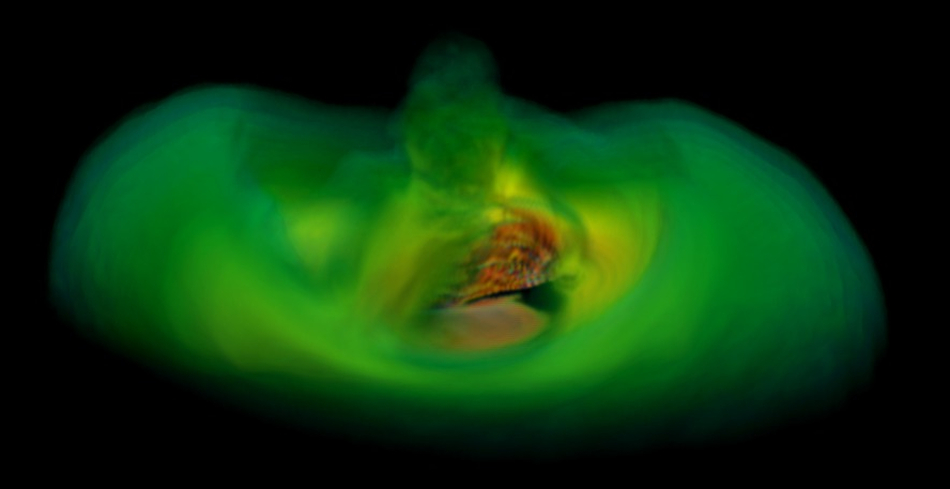
 Credit: NASA's Goddard Space Flight Center; P. Cowperthwaite, University of Maryland
Credit: NASA's Goddard Space Flight Center; P. Cowperthwaite, University of Maryland
Mergers and Expositions
Black holes can grow by gobbling up matter that surrounds them, and by merging with other black holes. We see lots of evidence of black holes accreting matter, since this accretion process generates very high temperatures, making such accreting black holes glow brightly in X-rays. Accreting supermassive black holes at the centers of galaxies show extreme particle acceleration and the presence of radio jets stretching for hundreds of thousands of lightyears. Black hole mergers, in which two gravitationally bound black holes spiral together and collide, are more mysterious, and no clear evidence of a black hole merger has ever been seen. So it's unclear how frequently or infrequently such mergers occur. The best evidence of a black hole merger would be the detection of gravitational radiation, produced as the merging black holes spiral together, accelerating faster and faster, and creating observable ripples in the fabric of spacetime, as Einstein first predicted. But gravitational radiation is invisible, and can only be detected by measuring extremely tiny changes in distances between gravitational-wave detectors. Would such mergers also produce observable signals of electromagnetic radiation that we could pinpoint directly with X-ray telescopes? To help answer that question, astrophysicists have tried to model black hole mergers in which the black holes are surrounded by magnetized accretion disks. The image above is a frame from a more detailed video showing what happens when two such accreting black holes spiral together. This image shows, in green and red, the increasing density of gas around the merging system just before the black holes collide with each other. Modeling changes in the density and temperature of the gas around the merging system may help astronomers understand the kind of unique electromagnetic signals such black hole mergers should produce.
Published: March 2, 2015
<
HEA Dictionary ● Archive
● Search HEAPOW
● Other Languages
● HEAPOW on Facebook
● Download all Images
● Education ● HEAD
>

Each week the HEASARC
brings you new, exciting and beautiful images from X-ray and Gamma ray
astronomy. Check back each week and be sure to check out the HEAPOW archive!
Page Author: Dr. Michael F. Corcoran
Last modified Monday, 26-Feb-2024 17:20:31 EST


